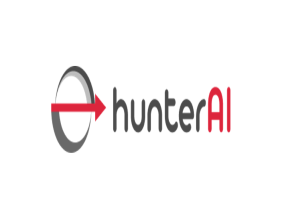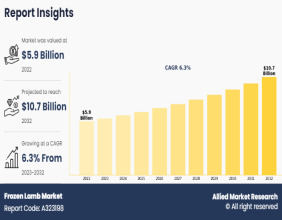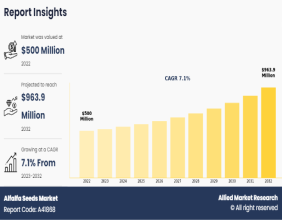Highlights
- Alnylam Pharmaceuticals exhibits stronger resource efficiency in profitability metrics
- Valuation measures indicate a more accessible stock profile for Alnylam Pharmaceuticals
- Institutional participation is notably higher in Alnylam Pharmaceuticals compared to Mirum Pharmaceuticals
Alnylam Pharmaceuticals (NASDAQ:ALNY) and Mirum Pharmaceuticals (NASDAQ:MIRM) stand as significant players in the biopharmaceutical category, each advancing unique therapeutic approaches. Both companies are active in developing treatments for diverse medical conditions, yet a detailed comparison of their financial performance, operational efficiency, and market structures reveals contrasting strategic paths.
Financial Performance and Profitability
Alnylam Pharmaceuticals demonstrates a track record of managing its resources with greater efficiency, as evidenced by its relatively less negative profit margins and return on assets. The company’s operational framework supports a financial performance that, while challenged by the typical expenses of advanced research and regulatory compliance, appears more stable when compared with its counterpart. Mirum Pharmaceuticals, in contrast, shows wider negative profit margins and lower returns on assets. These metrics indicate that despite similar industry pressures, Alnylam has achieved a level of operational effectiveness that translates into a more resilient financial profile. The differences in profitability metrics highlight the distinct ways in which each company manages research and development costs, as well as the broader implications of their operational strategies in a competitive sector.
Valuation and Market Pricing
In terms of market pricing, Alnylam Pharmaceuticals is associated with a lower price-to-earnings ratio, signaling that its stock profile may be more accessible relative to its earnings potential. This valuation metric provides a window into market sentiment and the perceived balance between current financial performance and the potential for future revenue growth. Mirum Pharmaceuticals, by comparison, exhibits a higher price-to-earnings ratio, reflecting a market perspective that emphasizes the challenges associated with its narrower therapeutic focus. The valuation differences underscore how each company’s strategic focus and operational scale influence market pricing. With a broader portfolio and more diversified research efforts, Alnylam is viewed as having a pricing dynamic that appeals to those looking for a balance between current performance and future opportunities, even as both companies face the inherent uncertainties of drug development.
Ownership Structure and Stakeholder Composition
A closer look at the composition of ownership reveals further differences between the two entities. Alnylam Pharmaceuticals benefits from a robust level of institutional participation, a factor that reinforces confidence in its operational strategies and long-term planning. High institutional ownership is often reflective of widespread support from professional organizations and financial institutions that align their resources with the company’s strategic direction. On the other hand, Mirum Pharmaceuticals exhibits a higher proportion of insider ownership. This concentrated internal stake suggests that the company’s leadership maintains a significant personal commitment to its future, even though it might not attract the same degree of external professional backing. The contrast in ownership structures emphasizes differing governance approaches, where a broad institutional base can provide a measure of market stability, and concentrated insider participation may lead to nimble decision-making under specific market conditions.
Risk Profile and Market Volatility
Risk dynamics play a crucial role in understanding how these companies behave in fluctuating market environments. Alnylam Pharmaceuticals is characterized by a relatively low beta, a metric that indicates reduced sensitivity to market swings. This lower volatility suggests that its stock performance tends to be steadier, benefiting from diversified operations and strategic partnerships that help mitigate external pressures. In contrast, Mirum Pharmaceuticals has a beta that is closer to market averages, pointing to higher sensitivity and more pronounced fluctuations in share price. The differential in beta values serves as an indicator of the underlying risk profiles, where the broader operational base of Alnylam contributes to a more tempered market response, and the more focused approach of Mirum results in higher variability. Such risk assessments provide insights into the operational resilience of each company amid the uncertainties inherent in the biopharmaceutical landscape.
Business Strategies and Therapeutic Focus
Distinct strategic approaches further differentiate Alnylam Pharmaceuticals and Mirum Pharmaceuticals. Alnylam is well known for its pioneering work in RNA interference and the development of RNA-based therapies. This innovative focus is complemented by strategic partnerships with other prominent entities in the field, enhancing its research capabilities and broadening its therapeutic pipeline. The company’s diversified approach allows it to address multiple conditions, thereby spreading risk across various research areas and capitalizing on a wide array of market opportunities.
Mirum Pharmaceuticals, by contrast, has chosen to concentrate its efforts on the development of treatments for rare and orphan diseases. This specialized focus enables the company to target medical conditions that are often underserved in mainstream research, carving out a niche where it can leverage its deep expertise. The targeted strategy provides Mirum with the opportunity to make significant advancements in specific therapeutic areas, even as it faces the challenges of operating within a narrower market segment. Both business strategies reflect tailored approaches to drug development, where Alnylam’s expansive and diversified research contrasts with Mirum’s concentrated pursuit of niche therapies.
Operational Efficiency and Future Trajectory
Operational efficiency remains a pivotal factor in determining market performance. Alnylam Pharmaceuticals has invested in an infrastructure that supports extensive research collaborations and efficient project management, which in turn has contributed to a more favorable financial outcome. Its operational model is designed to harness the benefits of scale and diversification, facilitating the steady advancement of its therapeutic programs. Mirum Pharmaceuticals, while innovative in its specialized domain, grapples with the intensive resource demands characteristic of rare disease research. The concentrated focus necessitates significant commitments in targeted clinical studies, which can challenge overall operational efficiency in a rapidly evolving regulatory and market environment. The operational strategies of each company thus reveal a balance between scale and specialization, with Alnylam’s broader approach yielding a more consistent performance compared to the concentrated, high-risk, high-reward model pursued by Mirum.
Strategic Collaborations and Research Partnerships
Both companies leverage strategic collaborations to bolster their research and development efforts, although their approaches differ markedly. Alnylam Pharmaceuticals has forged multiple alliances with established industry leaders, which enrich its research ecosystem and facilitate access to advanced technologies and complementary expertise. These collaborations not only expand its therapeutic pipeline but also reinforce its competitive edge in a crowded market. Mirum Pharmaceuticals, meanwhile, focuses on partnerships that are finely tuned to its niche of rare diseases. Its alliances are aimed at harnessing specialized knowledge and addressing the unique challenges posed by orphan conditions. This tailored approach to partnerships ensures that each collaboration is highly aligned with the company’s core research objectives, even as it limits the breadth of its operational scope. The contrast in collaboration strategies highlights the distinct pathways each company has taken to navigate the complexities of drug development.
The comparative analysis of Alnylam Pharmaceuticals and Mirum Pharmaceuticals reveals a multifaceted landscape within the biopharmaceutical sector. Alnylam Pharmaceuticals distinguishes itself with a robust operational model that supports efficient resource management, favorable valuation dynamics, and strong institutional backing. Its diversified research strategy and strategic partnerships contribute to a more tempered market performance and lower volatility. In contrast, Mirum Pharmaceuticals operates within a specialized niche, channeling its efforts into the development of treatments for rare conditions. Although its focused approach has led to challenges in achieving operational efficiency and broader market appeal, the company demonstrates a deep internal commitment to its mission through concentrated insider ownership.
These contrasting profiles underscore the diverse methodologies employed by companies operating in the same industry. While one company leverages scale and diversified operations to foster stability, the other embraces specialization as a means to target unique therapeutic needs. Both approaches carry inherent strengths and challenges, providing valuable insights into the complex dynamics of biopharmaceutical innovation. The analysis of financial performance, market pricing, ownership structures, risk profiles, and strategic partnerships paints a comprehensive picture of how these companies navigate the intricacies of their sector, each carving out a distinct space in the competitive landscape of advanced medical research.




